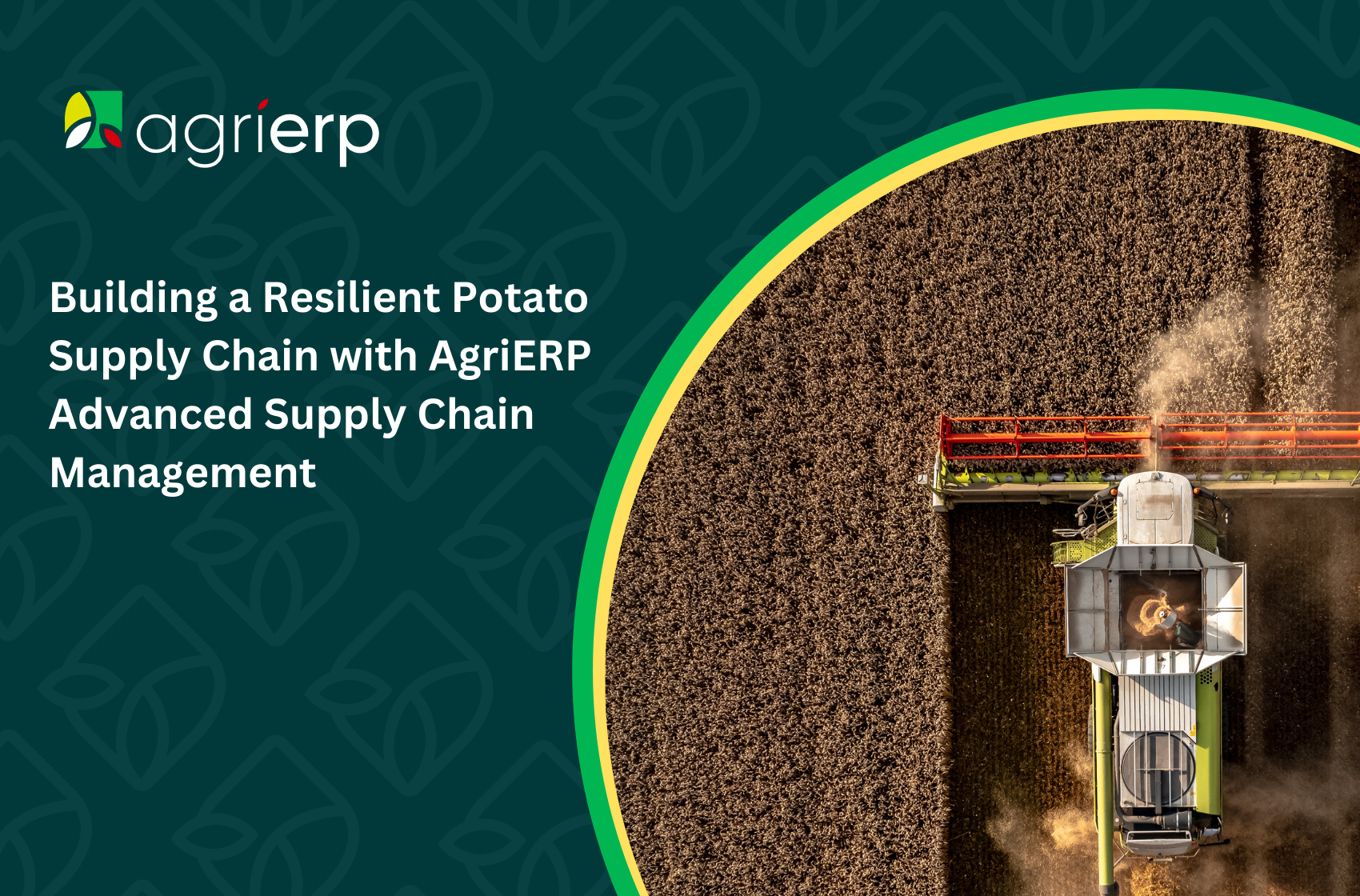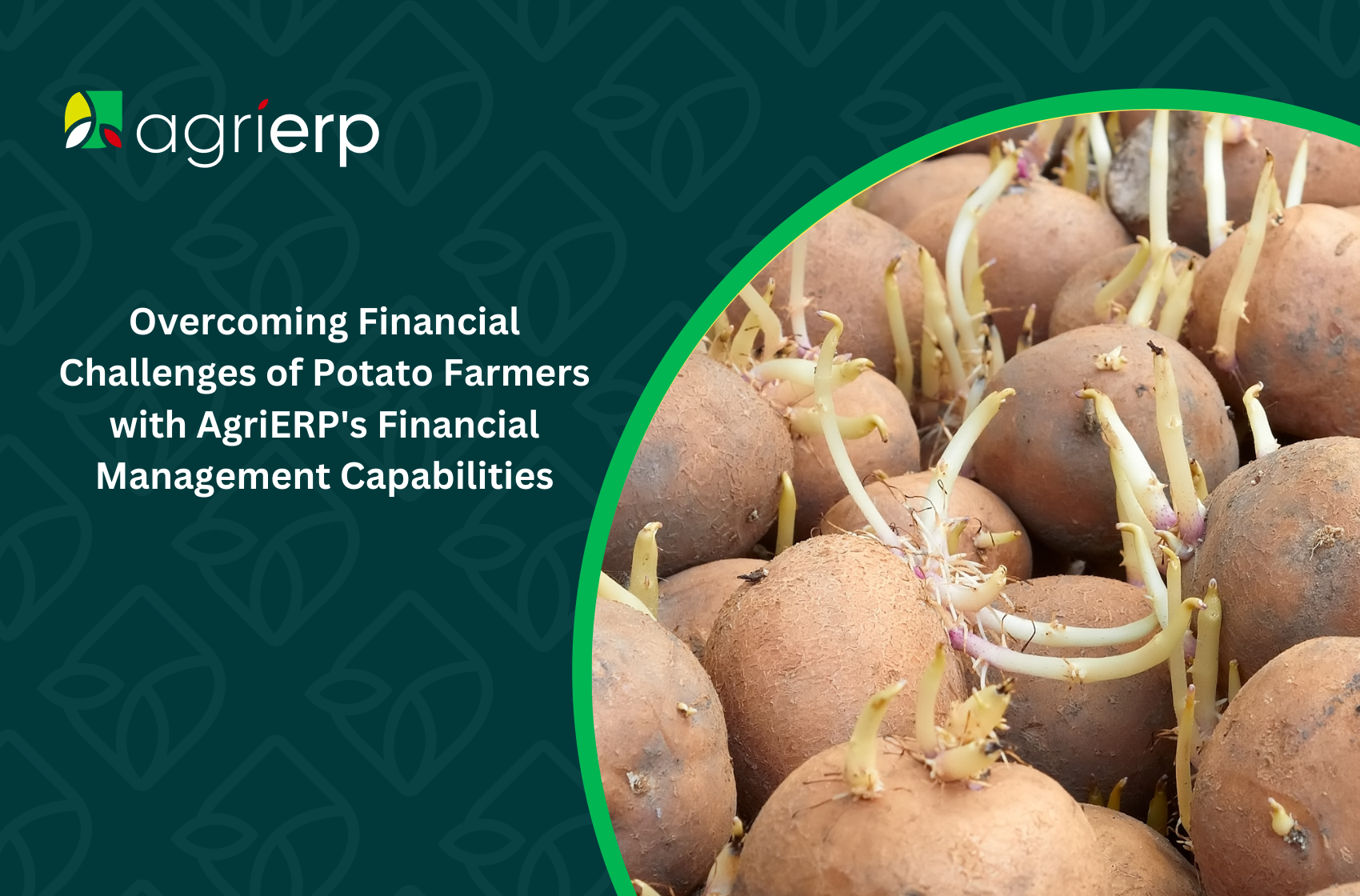Growing potatoes can be a rewarding endeavor, but like all agriculture, it requires precise knowledge and tools to achieve the best results. One of the crucial factors in potato farming is proper irrigation. This article will delve into effective watering techniques and irrigation methods tailored for potato crops in 2024, incorporating how AgriERP, powered by Microsoft Dynamics 365, facilitates efficient irrigation management.
Understanding Potato Water Requirements
Potatoes are moderately thirsty crops that require consistent moisture for optimal growth. The amount of water potatoes need depends on various factors including soil type, climate, and the stage of growth. Generally, potatoes need about 1 to 2 inches of water per week. This can come from rainfall or manual irrigation. Ensuring the soil is moist but not waterlogged is key to healthy potato growth.
Key Growth Stages and Water Needs
- Tuber Initiation: This stage requires consistent moisture as the tubers begin to form. Inadequate water can lead to poorly developed tubers.
- Tuber Bulking: Most critical for water demand, the bulking stage is when the tubers gain most of their mass. Consistent, ample watering during this phase is crucial.
Modern Irrigation Techniques for Potatoes
Effective irrigation goes beyond just watering your crops; it involves methods and tools that ensure water is used efficiently to meet the plants’ needs without wastage.
Drip Irrigation
Drip irrigation is highly efficient for potato crops as it delivers water directly to the soil at the base of the plants. This method reduces evaporation and runoff, ensuring that water goes where it’s most needed and conserves water.
Furrow Irrigation
Traditional yet effective, furrow irrigation involves creating small channels along the rows of potatoes. Water flows through these furrows, soaking into the soil to reach the roots. While less efficient than drip irrigation in terms of water use, it is cost-effective and suitable for larger fields.
Sprinkler Systems
Sprinkler systems are versatile and can cover large areas. They can be adjusted to various intensities and schedules, making them suitable for the different stages of potato growth.
Technology Integration with AgriERP
Incorporating technology in irrigation management can dramatically improve efficiency and productivity. AgriERP, a farm management software powered by Microsoft Dynamics 365, offers sophisticated tools that help farmers optimize their irrigation practices.
Real-Time Moisture Monitoring
AgriERP integrates sensors that can monitor soil moisture in real-time, providing data that helps farmers decide when to water their crops. This reduces water waste and ensures that potatoes receive moisture exactly when they need it.
Automated Irrigation Schedules
With AgriERP, farmers can set up automated irrigation schedules based on real-time data and weather forecasts. This automation ensures that watering is done efficiently and at optimal times, reducing labor costs and improving water management.
Analysis and Reports
AgriERP provides detailed analysis and reports on irrigation practices, water usage, and crop health. This information is crucial for making informed decisions about water management strategies and understanding the impact of irrigation practices on crop yield.
Best Practices for Watering Potatoes
Adopting best practices in irrigation not only enhances crop yield but also conserves resources. Here are some tips for watering potatoes effectively:
- Check Soil Moisture Regularly: Ensure the soil is consistently moist to the touch, but not waterlogged.
- Adjust According to Weather: Reduce irrigation in rainy periods and increase it during dry spells.
- Use Mulch: Applying organic mulch around your potato plants can help retain soil moisture and reduce the frequency of watering.
- Regular Maintenance: Regularly check and maintain your irrigation systems to ensure they are functioning efficiently.
Conclusion
Efficient irrigation is fundamental to successful potato farming. By adopting modern irrigation methods and integrating advanced technologies like AgriERP, farmers can ensure that their crops receive the right amount of water at the right time. This not only maximizes crop yield but also contributes to sustainable water management in agriculture.
In 2024, as agricultural technologies continue to evolve, embracing these innovations will be key to achieving high efficiency and productivity in potato farming. AgriERP stands at the forefront of this revolution, providing the tools necessary for farmers to manage their irrigation needs effectively and sustainably.



